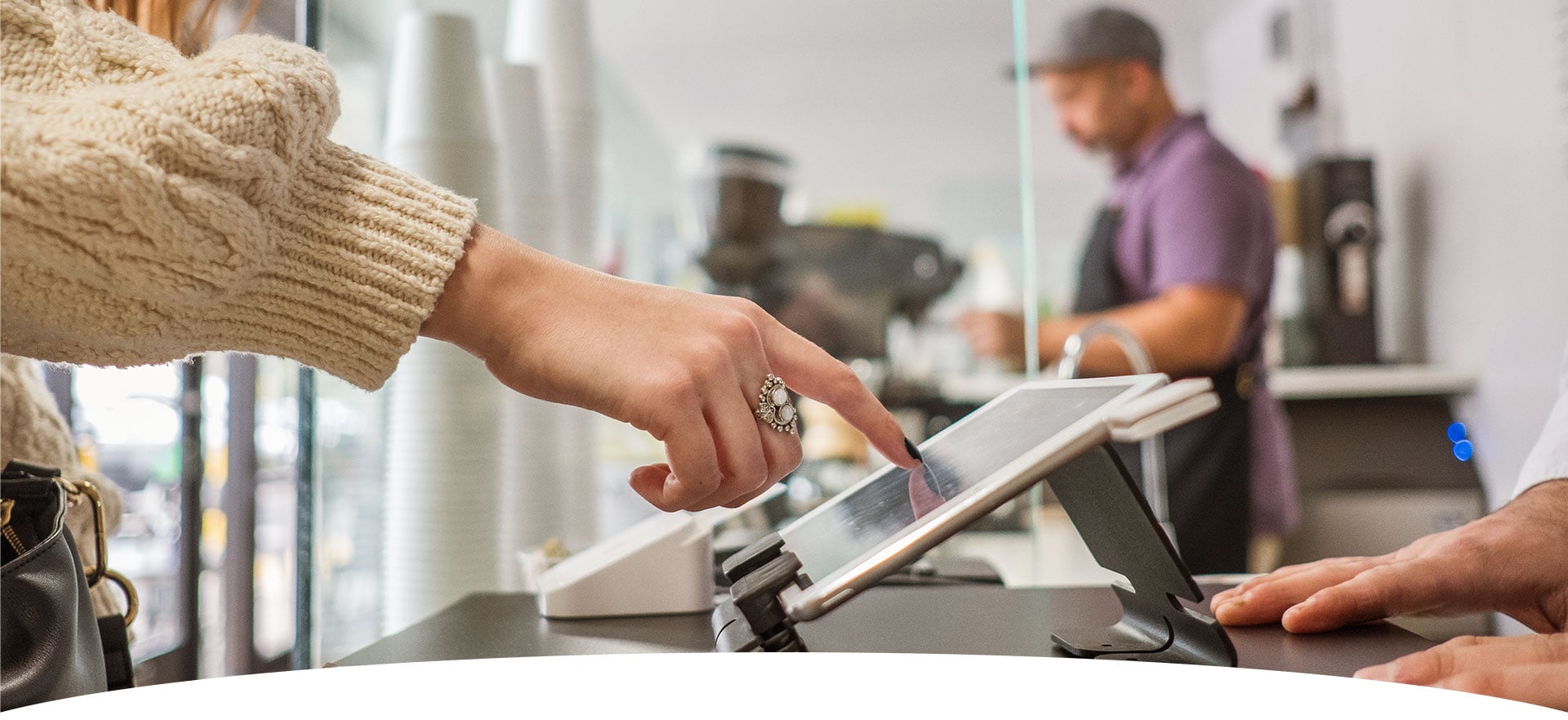February 08, 2024
Modernizing the Retail Customer Experience
Best practices and best-in-class technologies can help retailers delight their customers and create a competitive edge.
Retailers face a variety of daunting challenges. They must deal with financial pressures as inflation drives up prices and theft affects their bottom line. They have to address technology issues such as cybersecurity threats and the need for better data while also operating with outdated tools and limited networks.
The reality is that many stores need an upgrade. Technology can give retailers new avenues to address their challenges. For example, IT enhancements such as better connectivity, upgraded point-of-sale solutions and application modernization can improve the shopping experience for customers while enhancing productivity for sales associates.
For businesses that undertake a retail modernization initiative, an effective strategy is imperative. Business and IT leaders must clearly understand their objectives and map out a path to achieve them. Those that get it right will reap valuable benefits, such as new data-driven insights into customers, more robust cybersecurity and an enhanced omnichannel experience.
How can you overcome your retail technology challenges?
Retailers face a variety of daunting challenges. They must deal with financial pressures as inflation drives up prices and theft affects their bottom line. They have to address technology issues such as cybersecurity threats and the need for better data while also operating with outdated tools and limited networks.
The reality is that many stores need an upgrade. Technology can give retailers new avenues to address their challenges. For example, IT enhancements such as better connectivity, upgraded point-of-sale solutions and application modernization can improve the shopping experience for customers while enhancing productivity for sales associates.
For businesses that undertake a retail modernization initiative, an effective strategy is imperative. Business and IT leaders must clearly understand their objectives and map out a path to achieve them. Those that get it right will reap valuable benefits, such as new data-driven insights into customers, more robust cybersecurity and an enhanced omnichannel experience.
How can you overcome
your retail technology challenges?

Labor shortages, historically high inflation, and increases in theft, crime and shrinkage — retailers have been forced to confront a potent combination of challenges in recent years. At the same time, technology, customer behavior and payment options are evolving more quickly than ever. And these hurdles all come on the heels of a global pandemic that threatened some stores’ very existence. Many consumers who turned to online shopping during the COVID-19 pandemic are continuing to make the bulk of their purchases from home, and retailers are still competing with one another to lure them back into their physical stores.
Technology can help retailers solve many of their most pressing challenges, but only when they implement solutions in ways that also help solve problems for shoppers. Consider self-checkout, for instance. Many stores have installed self-checkout kiosks as a cost-effective way to solve their staffing shortages and reduce customer wait times. But too often, self-checkout creates an irritating experience for customers and introduces new problems for loss prevention professionals. However, when such initiatives are implemented effectively — with the right technology for the job — they can both enhance the customer experience and help retailers achieve their business goals.
62%
The percentage of retailers that increased their budgets for in-store technology in 2023
Source: Retail TouchPoints, “2023 Store Operations Benchmark Survey,” Oct. 19, 2023
This might mean using video analytics to reduce shrink at self-checkout kiosks, as well as to sniff out “sweethearting” scams and other employee theft. It might mean increasing the use of radio frequency identification, predictive analytics and other technologies to improve inventory tracking and ensure that items will be in stock when customers need them. Or it might mean using geolocation to track customers arriving for pickup, reducing wait times and friction for shoppers who have grown accustomed to the convenience of same-day delivery.
Already, many stores have aggressively embraced digital transformation, developing custom mobile apps, deploying digital signage, building out robust customer Wi-Fi networks and taking other forward-looking steps to delight shoppers and maintain an edge over their competitors. By continuing to optimize your IT environments and thoughtfully leveraging emerging technologies such as artificial intelligence, retailers can gain ground in a competitive sector and give customers an experience that’s worth leaving home for.
Emerging Technologies in Retail
Digital capabilities enable retailers to offer customers new ways to make purchases and have their items delivered.
Artificial Intelligence: Retailers can leverage AI for customer service chatbots, personalized marketing campaigns and demand forecasting, among other uses. Companies across sectors are aggressively pursuing new AI applications. Those that figure out how to use the technology effectively will give themselves a decided advantage.
Edge Computing:
By processing data nearer to the point of interaction, edge computing solutions enable retailers to offer faster and more reliable connectivity. This, in turn, can power services that boost customer satisfaction, such as real-time inventory tracking and personalized in-store promotions.
Extended Reality: Although the metaverse did not take off in the way that some observers predicted, augmented reality and virtual reality have been valuable in some niche use cases. For instance, AR and VR applications in retail allow customers to visualize products in their own spaces, virtually “try on” items and engage with educational content about products before purchasing.
Labor shortages, historically high inflation, and increases in theft, crime and shrinkage — retailers have been forced to confront a potent combination of challenges in recent years. At the same time, technology, customer behavior and payment options are evolving more quickly than ever. And these hurdles all come on the heels of a global pandemic that threatened some stores’ very existence. Many consumers who turned to online shopping during the COVID-19 pandemic are continuing to make the bulk of their purchases from home, and retailers are still competing with one another to lure them back into their physical stores.
Technology can help retailers solve many of their most pressing challenges, but only when they implement solutions in ways that also help solve problems for shoppers. Consider self-checkout, for instance. Many stores have installed self-checkout kiosks as a cost-effective way to solve their staffing shortages and reduce customer wait times. But too often, self-checkout creates an irritating experience for customers and introduces new problems for loss prevention professionals. However, when such initiatives are implemented effectively — with the right technology for the job — they can both enhance the customer experience and help retailers achieve their business goals.
62%
The percentage of retailers that increased their budgets for in-store technology in 2023
Source: Retail TouchPoints, “2023 Store Operations Benchmark Survey,” Oct. 19, 2023
This might mean using video analytics to reduce shrink at self-checkout kiosks, as well as to sniff out “sweethearting” scams and other employee theft. It might mean increasing the use of radio frequency identification, predictive analytics and other technologies to improve inventory tracking and ensure that items will be in stock when customers need them. Or it might mean using geolocation to track customers arriving for pickup, reducing wait times and friction for shoppers who have grown accustomed to the convenience of same-day delivery.
Already, many stores have aggressively embraced digital transformation, developing custom mobile apps, deploying digital signage, building out robust customer Wi-Fi networks and taking other forward-looking steps to delight shoppers and maintain an edge over their competitors. By continuing to optimize your IT environments and thoughtfully leveraging emerging technologies such as artificial intelligence, retailers can gain ground in a competitive sector and give customers an experience that’s worth leaving home for.
Emerging Technologies in Retail
Digital capabilities enable retailers to offer customers new ways to make purchases and have their items delivered.
Artificial Intelligence: Retailers can leverage AI for customer service chatbots, personalized marketing campaigns and demand forecasting, among other uses. Companies across sectors are aggressively pursuing new AI applications. Those that figure out how to use the technology effectively will give themselves a decided advantage.
Edge Computing:
By processing data nearer to the point of interaction, edge computing solutions enable retailers to offer faster and more reliable connectivity. This, in turn, can power services that boost customer satisfaction, such as real-time inventory tracking and personalized in-store promotions.
Extended Reality: Although the metaverse did not take off in the way that some observers predicted, augmented reality and virtual reality have been valuable in some niche use cases. For instance, AR and VR applications in retail allow customers to visualize products in their own spaces, virtually “try on” items and engage with educational content about products before purchasing.
Modern Retail by the Numbers
A 2023 report from Retail TouchPoints offers insights into the challenges that stores face and how they are using technology to address them.
70%
The percentage of retailers that cited hiring and retaining associates as their top store operations challenge in 2023
Source: Retail TouchPoints, “2023 Store Operations Benchmark Survey,” Oct. 19, 2023
82%
The percentage of retailers that equipped store associates with mobile devices
Source: Retail TouchPoints, “2023 Store Operations Benchmark Survey,” Oct. 19, 2023
59%
The percentage of retailers reporting that providing mobile devices to store employees increased productivity, and 50% said it increased upselling and cross-selling
Source: Retail TouchPoints, “2023 Store Operations Benchmark Survey,” Oct. 19, 2023
80%
The percentage of retailers that said they had implemented mobile-integrated digital signage or planned to do so
Source: Retail TouchPoints, “2023 Store Operations Benchmark Survey,” Oct. 19, 2023
Modern Retail by the Numbers
A 2023 report from Retail TouchPoints offers insights into the challenges that stores face and how they are using technology to address them.
70%
The percentage of retailers that cited hiring and retaining associates as their top store operations challenge in 2023
Source: Retail TouchPoints, “2023 Store Operations Benchmark Survey,” Oct. 19, 2023
82%
The percentage of retailers that equipped store associates with mobile devices
Source: Retail TouchPoints, “2023 Store Operations Benchmark Survey,” Oct. 19, 2023
59%
The percentage of retailers reporting that providing mobile devices to store employees increased productivity, and 50% said it increased upselling and cross-selling
Source: Retail TouchPoints, “2023 Store Operations Benchmark Survey,” Oct. 19, 2023
80%
The percentage of retailers that said they had implemented mobile-integrated digital signage or planned to do so
Source: Retail TouchPoints, “2023 Store Operations Benchmark Survey,” Oct. 19, 2023
Before investing in new technologies, business and IT leaders should carefully consider what problems they are trying to solve. In addition to macroeconomic challenges related to labor and inflation, many retailers’ efforts to delight their customers and boost their bottom lines are limited by the following factors:
RISING COSTS: Although inflation numbers came down in 2023, stores are still adjusting to a new normal where the cost of producing, transporting, storing and selling items is markedly higher than it was in recent years. Theft only exacerbates this challenge, with more than one in three retailers reporting shrinkage rates above 2 percent in 2022. Many retailers are left with no choice but to pass these costs on to their customers, unless they can find new ways to trim their expenses.
DATA QUALITY: Across industries, artificial intelligence has taken the business world by storm. Data analytics capabilities also remain essential in the retail sector. Both of these areas of technology require quality data. When data environments are disorganized or inefficient, retailers are largely unable to leverage customer and store information to arrive at valuable business insights.
Click Below to Continue Reading
OUTDATED SYSTEMS: An otherwise game-changing retail application will fall flat if it is supported by ineffective legacy infrastructure — a long-standing and well-known problem in retail. Stores that invest in back-end technology see better performance than those that don’t, but these investments must be guided by an overarching, forward-looking strategy.
CYBERSECURITY AND COMPLIANCE: Stores are a rich target for cybercriminals, for obvious reasons. Retailers’ IT systems house a lot of sensitive customer data, including payment information. This results in the need to not only comply with Payment Card Industry Data Security Standard (PCI DSS) regulations, but also to protect environments against attacks that can negatively affect a retailer’s reputation with customers.
COST OF TECHNOLOGY PROJECTS: It’s the classic Catch-22 of retail — stores have to spend money to make money. But when sales are down and other expenses are up, it can be difficult to find budget dollars for new IT investments. This is why it is so important for technology projects to be accompanied by ROI analyses and other assessments.
NETWORK LIMITATIONS: The enterprise network has become critical to business success, thanks to the rise of mobile payments, the proliferation of custom store mobile apps, an increase in digital signage and other factors. In addition to new wireless networking and network management capabilities, retailers are exploring the use of 5G connectivity, together with edge computing, to address these challenges.
Retailers are implementing a wide array of technologies to help them modernize their processes. Broadly speaking, these tools align with one of three key pillars: connectivity, application modernization and point-of-sale solutions. Each of the pillars can improve the customer experience, enhance employee productivity and deliver multichannel insights.
Retailers wanting to modernize their operations are targeting a number of benefits, but they must address these pillars for success.
Connectivity: Robust connectivity is essential for ensuring uptime to provide uninterrupted customer service, enabling employee mobility and capturing customer data from anywhere in a physical store. Wi-Fi is typically the foundational connectivity layer in a retail setting, powering both business and customer use cases. On the business side, Wi-Fi can support applications such as advanced video analytics. For customers, Wi-Fi can improve the shopping experience and help them connect to retailers’ consumer-facing apps.
Software-defined wide area networks and 5G are also important pieces of the connectivity puzzle for retailers. SD-WAN can help stores manage increasingly complex networks and often results in lower costs. Although 5G networks have been slow to move into the mainstream, high-speed cellular connections can add redundancy and resilience to retail connectivity.
Application Modernization: Customers’ smartphones are already overflowing with applications, and most shoppers will download and use a retailer’s app only if it delivers tangible value and solid performance. App modernization efforts can help retailers to meet customer expectations, manage costs and seamlessly update their apps over time. Typically, app modernization involves containerizing applications to make them cloud-native, which creates efficiencies that lead to a more flexible, agile IT environment. Migrating apps to a public cloud environment can also lower computing costs and improve scalability.
Modernization is important for business-facing apps as well. These efforts can be intensive, with retailers or their IT partners conducting full inventories of applications and dependencies. Then, IT and business teams must decide whether each app needs to be rehosted, refactored, rebuilt, replaced or retired.
Click Below to Continue Reading
Point-of-Sale Solutions: To modernize their checkout systems, retailers must adopt point-of-sale solutions that improve both employee productivity and the buying experience. Mobile point-of-sale (mPOS) devices improve speed and convenience, allowing store associates to check customers out right on the sales floor. This enables employees to essentially do two jobs at once: first providing customer service, then taking payment. Also, mPOS can be especially useful for line busting. When more than a few customers are queued up at the available cash wraps, employees with mPOS devices can step in to get things moving.
Customers are also demanding self-checkout and contactless payment options. A single employee can oversee four or more self-checkout stations, allowing staff to be more effective and reducing actual and perceived wait times for customers. Contactless payments not only offer speed and convenience but also put health-conscious customers’ minds at ease.
Key Retail IoT Use Cases
The global market for Internet of Things technologies in retail was valued at nearly $43 billion in 2022, according to Grand View Research, and it is expected to grow by more than 28 percent per year between 2023 and 2030. Already, retailers are leveraging IoT for several high-value applications:
Smart Shelves: Smart shelves use weight sensors and radio frequency identification technology to monitor stock levels in real time, ensuring timely replenishment. Sensors, RFID tags and other hardware account for more than 46 percent of retail IoT revenue, according to Grand View Research.
Automated Checkout: A step beyond self-checkout, automated checkout systems scan items as customers add them to their shopping carts, and then automatically charge customers’ accounts when they leave the store. The research firm RBR predicts that the number of stores offering automated checkout will reach more than 12,000 by the end of 2027.
BOPIS with Geolocation: The option to buy online and pick up a purchase in a store (BOPIS) is very popular with shoppers, many of whom say it improves their experience. Through smartphone apps, stores can track customer arrivals in real time and facilitate prompt handover of orders, which enhances customer satisfaction and makes workers more efficient.
Supply Chain Optimization: IoT solutions can help track products throughout the supply chain, providing logistics managers with up-to-the-second information on location, condition and expected delivery windows. For example, more than half of retailers are using RFID to improve their inventory accuracy.
In-Store Analytics: Data from IoT sensors, mobile apps and cameras can enhance retailers’ understanding of foot traffic and shopper behavior. Retailers can use this data to improve the customer experience, giving themselves an advantage over their competitors.
Digital Signage and Advertising: IoT-connected digital signage allows for dynamic advertising content that responds to real-time customer data from mobile apps, smart shelves and automated checkout systems. Retailers can display targeted ads to make their marketing efforts more effective and enhance their customers’ interactive and immersive experience.
Checkout modernization is a resource-intensive effort, and retailers expect to see tangible business outcomes from their investments. Common goals include attaining new data-driven insights, improving the omnichannel customer experience, boosting cybersecurity and achieving widespread employee adoption of tools that create new value for the organization.
Using data effectively and finding the optimal channels for customer interactions are key objectives for retail modernization.
Multichannel Insights: Retailers are generating more information — from more channels — than ever, but they can only create value with this data if it is stored, processed and analyzed effectively. By unifying their data from multiple channels, companies can not only drive improvements to the customer experience but also find ways to capture lost revenue and enhance their supply chains.
Structured data from checkout systems, combined with unstructured data from sources such as customers’ social media feeds, can help retailers spot potential problems and identify new trends, leading to predictive insights about buying habits that inform inventory decisions.
Omnichannel Experience: Modernization efforts, especially those centered on the last mile, can help retailers better connect with existing and potential customers across a variety of channels, then start them down a journey that leads to a sale (and, even better, a lasting relationship).
Retailers need to be able to follow and support customers from the time they click on a social media advertisement to the time they walk into the store or go online to make a purchase. This omnichannel experience is enabled by initiatives such as BOPIS, as well as point-of-sale systems that are connected to multiple channels.
Click Below to Continue Reading
Improved Security: More customer channels and more data mean more potential targets for cybercriminals. Business and IT leaders in retail must not only aggressively protect their checkout endpoints but also implement effective identity and access management solutions and monitoring tools. Compliance with the PCI DSS is a top priority as retailers deploy modern checkout technology, and the new requirements of PCI DSS v4.0 add to the challenge. Retailers also need to comply with privacy regulations that have emerged recently across numerous states, starting with the California Consumer Privacy Act of 2018. Successful cyberattacks against retailers tend to generate splashy headlines, which can follow a store for years. By adopting secure, modernized checkout solutions, retailers can protect their customers’ data and their own reputations.
Adoption: Employee training and adoption can sometimes be overlooked in new technology investments. It’s important to remember that new solutions tend to enable new workflows, and store sales associates need to be trained in these new processes. Adoption by users is essential to the successful implementation and performance of new technology to provide a worthwhile ROI. One way to ensure adoption and optimize the results of a checkout modernization effort is to implement tools that are easy to deploy and simple to use. This can have an impact on customer satisfaction and adoption as well. For instance, shoppers will use a self-checkout kiosk if they perceive the tool to be quick and easy, but not if the kiosk tends to freeze up or requires employee intervention. A partner such as CDW can also provide adoption services that help retailers ensure that employees use new technologies effectively.
Key CDW Services: For retailers evaluating their current environments and potential IT investments, it might be difficult to know where to start. Services from CDW can help business and IT leaders address their existing challenges, identify areas of opportunity and accelerate time to impact.
IoT Ideation Workshop: During an IoT Ideation Workshop, CDW’s solution architects help retail leaders brainstorm about potential IoT applications, prioritize their most impactful ideas, analyze costs and implementation time, and ultimately deliver a roadmap outlining short-term next steps and long-term goals.
Transformation Workshop: In a CDW Transformation Workshop, experts perform a gap analysis and build a business integration plan for new technologies. Key deliverables include a summary of technologies that should be improved, replaced or added; a prioritized list of IT initiatives by business unit; and an analysis of the ROI and complexity of implementation for the most important projects.
PCI Services: The Payment Card Industry Data Security Standard is one of the most important compliance priorities for any retailer. CDW can assess current compliance practices, identify gaps between these practices and a retailer’s requirements, and deliver an actionable compliance roadmap. These engagements may include penetration testing, phishing assessments, network scans and cloud security assessments.
Digital Velocity Services: Digital Velocity Services are designed to help businesses accelerate their paths to important outcomes through a range of practices and services. These include deployment of automated infrastructure, integration of practical DevOps processes, cloud migrations, software and enterprise architecture assistance, improvements to collaboration ecosystems and talent services.
Before investing in new technologies, business and IT leaders should carefully consider what problems they are trying to solve. In addition to macroeconomic challenges related to labor and inflation, many retailers’ efforts to delight their customers and boost their bottom lines are limited by the following factors:
RISING COSTS: Although inflation numbers came down in 2023, stores are still adjusting to a new normal where the cost of producing, transporting, storing and selling items is markedly higher than it was in recent years. Theft only exacerbates this challenge, with more than one in three retailers reporting shrinkage rates above 2 percent in 2022. Many retailers are left with no choice but to pass these costs on to their customers, unless they can find new ways to trim their expenses.
DATA QUALITY: Across industries, artificial intelligence has taken the business world by storm. Data analytics capabilities also remain essential in the retail sector. Both of these areas of technology require quality data. When data environments are disorganized or inefficient, retailers are largely unable to leverage customer and store information to arrive at valuable business insights.
Click Below to Continue Reading
OUTDATED SYSTEMS: An otherwise game-changing retail application will fall flat if it is supported by ineffective legacy infrastructure — a long-standing and well-known problem in retail. Stores that invest in back-end technology see better performance than those that don’t, but these investments must be guided by an overarching, forward-looking strategy.
CYBERSECURITY AND COMPLIANCE: Stores are a rich target for cybercriminals, for obvious reasons. Retailers’ IT systems house a lot of sensitive customer data, including payment information. This results in the need to not only comply with Payment Card Industry Data Security Standard (PCI DSS) regulations, but also to protect environments against attacks that can negatively affect a retailer’s reputation with customers.
COST OF TECHNOLOGY PROJECTS: It’s the classic Catch-22 of retail — stores have to spend money to make money. But when sales are down and other expenses are up, it can be difficult to find budget dollars for new IT investments. This is why it is so important for technology projects to be accompanied by ROI analyses and other assessments.
NETWORK LIMITATIONS: The enterprise network has become critical to business success, thanks to the rise of mobile payments, the proliferation of custom store mobile apps, an increase in digital signage and other factors. In addition to new wireless networking and network management capabilities, retailers are exploring the use of 5G connectivity, together with edge computing, to address these challenges.
Retailers are implementing a wide array of technologies to help them modernize their processes. Broadly speaking, these tools align with one of three key pillars: connectivity, application modernization and point-of-sale solutions. Each of the pillars can improve the customer experience, enhance employee productivity and deliver multichannel insights.
Retailers wanting to modernize their operations are targeting a number of benefits, but they must address these pillars for success.
Connectivity: Robust connectivity is essential for ensuring uptime to provide uninterrupted customer service, enabling employee mobility and capturing customer data from anywhere in a physical store. Wi-Fi is typically the foundational connectivity layer in a retail setting, powering both business and customer use cases. On the business side, Wi-Fi can support applications such as advanced video analytics. For customers, Wi-Fi can improve the shopping experience and help them connect to retailers’ consumer-facing apps.
Software-defined wide area networks and 5G are also important pieces of the connectivity puzzle for retailers. SD-WAN can help stores manage increasingly complex networks and often results in lower costs. Although 5G networks have been slow to move into the mainstream, high-speed cellular connections can add redundancy and resilience to retail connectivity.
Application Modernization: Customers’ smartphones are already overflowing with applications, and most shoppers will download and use a retailer’s app only if it delivers tangible value and solid performance. App modernization efforts can help retailers to meet customer expectations, manage costs and seamlessly update their apps over time. Typically, app modernization involves containerizing applications to make them cloud-native, which creates efficiencies that lead to a more flexible, agile IT environment. Migrating apps to a public cloud environment can also lower computing costs and improve scalability.
Modernization is important for business-facing apps as well. These efforts can be intensive, with retailers or their IT partners conducting full inventories of applications and dependencies. Then, IT and business teams must decide whether each app needs to be rehosted, refactored, rebuilt, replaced or retired.
Click Below to Continue Reading
Point-of-Sale Solutions: To modernize their checkout systems, retailers must adopt point-of-sale solutions that improve both employee productivity and the buying experience. Mobile point-of-sale (mPOS) devices improve speed and convenience, allowing store associates to check customers out right on the sales floor. This enables employees to essentially do two jobs at once: first providing customer service, then taking payment. Also, mPOS can be especially useful for line busting. When more than a few customers are queued up at the available cash wraps, employees with mPOS devices can step in to get things moving.
Customers are also demanding self-checkout and contactless payment options. A single employee can oversee four or more self-checkout stations, allowing staff to be more effective and reducing actual and perceived wait times for customers. Contactless payments not only offer speed and convenience but also put health-conscious customers’ minds at ease.
Key Retail IoT Use Cases
The global market for Internet of Things technologies in retail was valued at nearly $43 billion in 2022, according to Grand View Research, and it is expected to grow by more than 28 percent per year between 2023 and 2030. Already, retailers are leveraging IoT for several high-value applications:
Smart Shelves: Smart shelves use weight sensors and radio frequency identification technology to monitor stock levels in real time, ensuring timely replenishment. Sensors, RFID tags and other hardware account for more than 46 percent of retail IoT revenue, according to Grand View Research.
Automated Checkout: A step beyond self-checkout, automated checkout systems scan items as customers add them to their shopping carts, and then automatically charge customers’ accounts when they leave the store. The research firm RBR predicts that the number of stores offering automated checkout will reach more than 12,000 by the end of 2027.
BOPIS with Geolocation: The option to buy online and pick up a purchase in a store (BOPIS) is very popular with shoppers, many of whom say it improves their experience. Through smartphone apps, stores can track customer arrivals in real time and facilitate prompt handover of orders, which enhances customer satisfaction and makes workers more efficient.
Supply Chain Optimization: IoT solutions can help track products throughout the supply chain, providing logistics managers with up-to-the-second information on location, condition and expected delivery windows. For example, more than half of retailers are using RFID to improve their inventory accuracy.
In-Store Analytics: Data from IoT sensors, mobile apps and cameras can enhance retailers’ understanding of foot traffic and shopper behavior. Retailers can use this data to improve the customer experience, giving themselves an advantage over their competitors.
Digital Signage and Advertising: IoT-connected digital signage allows for dynamic advertising content that responds to real-time customer data from mobile apps, smart shelves and automated checkout systems. Retailers can display targeted ads to make their marketing efforts more effective and enhance their customers’ interactive and immersive experience.
Checkout modernization is a resource-intensive effort, and retailers expect to see tangible business outcomes from their investments. Common goals include attaining new data-driven insights, improving the omnichannel customer experience, boosting cybersecurity and achieving widespread employee adoption of tools that create new value for the organization.
Using data effectively and finding the optimal channels for customer interactions are key objectives for retail modernization.
Multichannel Insights: Retailers are generating more information — from more channels — than ever, but they can only create value with this data if it is stored, processed and analyzed effectively. By unifying their data from multiple channels, companies can not only drive improvements to the customer experience but also find ways to capture lost revenue and enhance their supply chains.
Structured data from checkout systems, combined with unstructured data from sources such as customers’ social media feeds, can help retailers spot potential problems and identify new trends, leading to predictive insights about buying habits that inform inventory decisions.
Omnichannel Experience: Modernization efforts, especially those centered on the last mile, can help retailers better connect with existing and potential customers across a variety of channels, then start them down a journey that leads to a sale (and, even better, a lasting relationship).
Retailers need to be able to follow and support customers from the time they click on a social media advertisement to the time they walk into the store or go online to make a purchase. This omnichannel experience is enabled by initiatives such as BOPIS, as well as point-of-sale systems that are connected to multiple channels.
Click Below to Continue Reading
Improved Security: More customer channels and more data mean more potential targets for cybercriminals. Business and IT leaders in retail must not only aggressively protect their checkout endpoints but also implement effective identity and access management solutions and monitoring tools. Compliance with the PCI DSS is a top priority as retailers deploy modern checkout technology, and the new requirements of PCI DSS v4.0 add to the challenge. Retailers also need to comply with privacy regulations that have emerged recently across numerous states, starting with the California Consumer Privacy Act of 2018. Successful cyberattacks against retailers tend to generate splashy headlines, which can follow a store for years. By adopting secure, modernized checkout solutions, retailers can protect their customers’ data and their own reputations.
Adoption: Employee training and adoption can sometimes be overlooked in new technology investments. It’s important to remember that new solutions tend to enable new workflows, and store sales associates need to be trained in these new processes. Adoption by users is essential to the successful implementation and performance of new technology to provide a worthwhile ROI. One way to ensure adoption and optimize the results of a checkout modernization effort is to implement tools that are easy to deploy and simple to use. This can have an impact on customer satisfaction and adoption as well. For instance, shoppers will use a self-checkout kiosk if they perceive the tool to be quick and easy, but not if the kiosk tends to freeze up or requires employee intervention. A partner such as CDW can also provide adoption services that help retailers ensure that employees use new technologies effectively.
Key CDW Services: For retailers evaluating their current environments and potential IT investments, it might be difficult to know where to start. Services from CDW can help business and IT leaders address their existing challenges, identify areas of opportunity and accelerate time to impact.
IoT Ideation Workshop: During an IoT Ideation Workshop, CDW’s solution architects help retail leaders brainstorm about potential IoT applications, prioritize their most impactful ideas, analyze costs and implementation time, and ultimately deliver a roadmap outlining short-term next steps and long-term goals.
Transformation Workshop: In a CDW Transformation Workshop, experts perform a gap analysis and build a business integration plan for new technologies. Key deliverables include a summary of technologies that should be improved, replaced or added; a prioritized list of IT initiatives by business unit; and an analysis of the ROI and complexity of implementation for the most important projects.
PCI Services: The Payment Card Industry Data Security Standard is one of the most important compliance priorities for any retailer. CDW can assess current compliance practices, identify gaps between these practices and a retailer’s requirements, and deliver an actionable compliance roadmap. These engagements may include penetration testing, phishing assessments, network scans and cloud security assessments.
Digital Velocity Services: Digital Velocity Services are designed to help businesses accelerate their paths to important outcomes through a range of practices and services. These include deployment of automated infrastructure, integration of practical DevOps processes, cloud migrations, software and enterprise architecture assistance, improvements to collaboration ecosystems and talent services.






